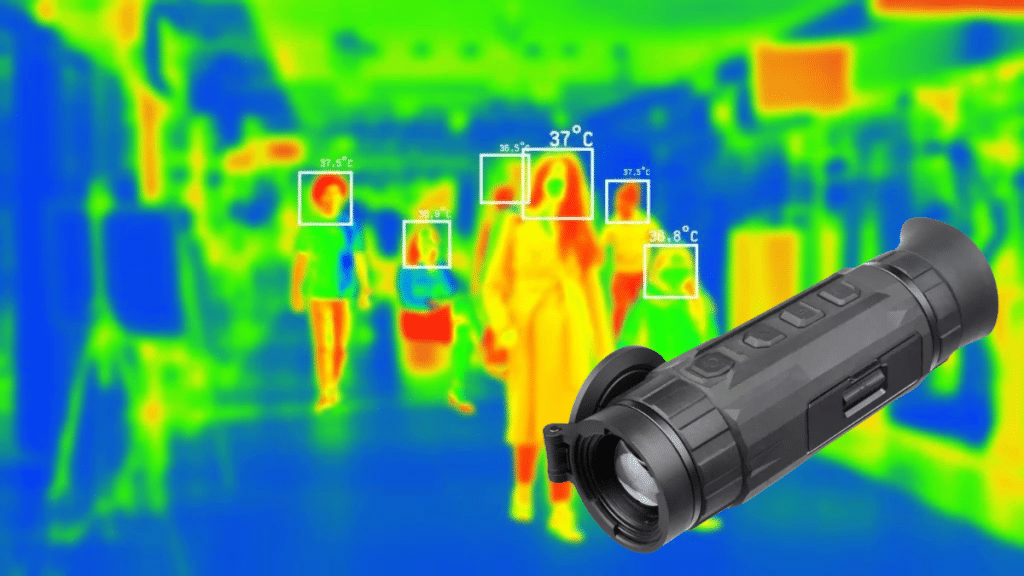Once restricted to the domains of industry and the military, thermal imaging has developed into a vital technology that enhances our everyday lives. This technology functions by transforming the heat that things release into visual pictures, which in turn unveils a hidden thermal world that is not apparent to the human eye. Its capacity to see beyond visible light makes it a flexible tool that may be used for many different aspects of daily living, such as improving energy efficiency, home safety, and healthcare diagnostics.
By incorporating thermal imaging into routine tasks, we may achieve improved safety, increased productivity, and a plethora of chances for inventive problem-solving and imaginative inquiry. With this transition from specialist applications to everyday utility, thermal imaging is recognized as a trailblazing force that bridges the gap between cutting-edge technology and practical, everyday use.
Find below five strong arguments for why thermal imaging is the ideal option for daily use.
Enhancing home and building safety
It is possible to identify hidden problems such as electrical malfunctions, water leaks, or insufficient insulation by using thermal imaging to measure temperature differences inside walls, floors, and ceilings. The ability to recognize potential risks before they become major issues helps homeowners save a great deal of time, money, and worry. Assuring home safety and comfort has never been easier with this vital equipment that offers a non-intrusive way to monitor and preserve structural integrity.
Facilitating preventive maintenance
Thermal imaging is very helpful in the field of preventative maintenance because it may detect overheated parts or friction in mechanical systems before they break. The utilization of predictive maintenance extends the life of the equipment and minimizes downtime by enabling prompt interventions. Thermal imaging contributes to the smooth and reliable functioning of industrial machinery, automobiles, and domestic appliances by preventing problems.
Improving energy efficiency
Thermal imaging is an effective ally in the fight for energy efficiency. It directs efficient insulation upgrades by identifying places in buildings where heat loss occurs, such as around windows, doors, and insulation gaps. By doing this, you not only cut your energy use but also your electricity costs and carbon footprint. Thermal imaging provides a simple solution for increasing the economic and environmental efficiency of homes and businesses at a time when sustainability is a major concern.
Advancing healthcare diagnostics
Thermal imaging offers non-invasive, real-time insights into the human body in the healthcare industry. It can identify unusual temperature fluctuations that may be a sign of illnesses including infections, circulatory problems, or inflammation. Because of this feature, thermal imaging is a useful diagnostic tool that enhances conventional medical exams by providing a rapid and secure means of evaluating and tracking health issues without the need for radiation or intrusive treatments.
Enhancing night vision and safety
By enabling sharp images in complete darkness, through smoke, or in foggy conditions, thermal imaging turns night into day. This feature is especially helpful for security systems because it enables continuous monitoring regardless of lighting conditions. Thermal imaging can also be used in automotive applications to notify drivers of the presence of animals or pedestrians outside the beam of their headlights, greatly improving nighttime driving safety.
To Conclude
After being used for military and industrial applications initially, thermal imaging became an essential tool for daily life. Its flexibility and utility are demonstrated by its capacity to boost night vision and safety, promote healthcare diagnostics, enable preventative maintenance, improve energy efficiency, and disclose hidden threats. Thermal imaging gives us the ability to see the invisible, which not only makes life safer and more efficient but also creates new opportunities for environmental stewardship and creativity. Its incorporation into many facets of daily life highlights a larger trend toward using technology to enhance both human well-being and environmental sustainability.


